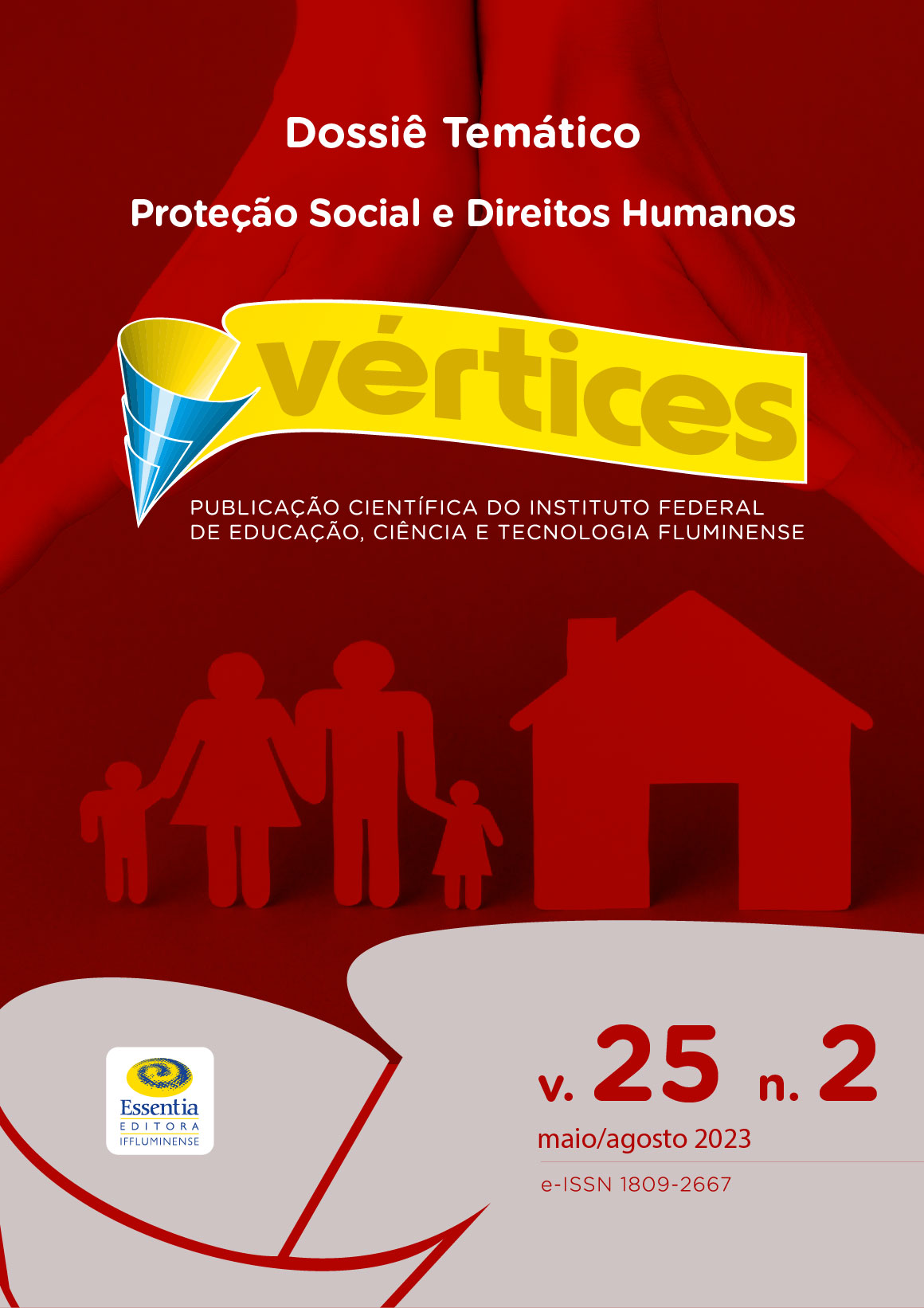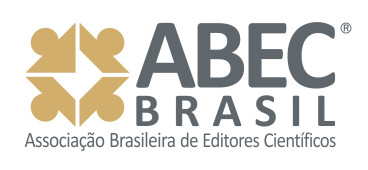Determinação de As, Cd, Cr, Cu, Pb e Zn em chás pretos (Camellia sinensis L.) comercializados em supermercados de Campos dos Goytacazes/RJ
DOI:
https://doi.org/10.19180/1809-2667.v25n22023.19110Palavras-chave:
Camellia sinensis L., chá preto, elementos potencialmente tóxicos, micronutrientes, ICP OESResumo
A Camellia sinensis L. é um arbusto da família das Theaceae. A partir das suas folhas é produzido um chá que é a segunda bebida não alcoólica mais consumida no mundo. O chá dessa planta pode trazer vários benefícios à saúde, entretanto alguns elementos presentes nas folhas da Camellia sinensis L. são potencialmente tóxicos como, por exemplo, o As, Cd e Pb; uma vez que estão entre as dez substâncias químicas de maiores riscos à saúde. Desta forma, o objetivo deste trabalho foi determinar as concentrações de As, Cd, Cr, Cu, Pb e Zn por espectrometria de emissão óptica com plasma acoplado indutivamente (ICP OES) após decomposição ácida de amostras comerciais de chá preto da planta Camellia sinensis L. adquiridas em supermercados de Campos dos Goytacazes/RJ. Os limites de detecção para os elementos foram de 0,5 mg kg−1 para As; 0,003 mg kg−1 para Cd; 0,02 mg kg−1 para Cr; 1,2 mg kg−1 para Cu; 0,09 mg kg−1 para Pb e 0,04 mg kg−1 para Zn. As concentrações encontradas dos elementos potencialmente tóxicos Cd e Pb nos chás pretos da Camellia sinensis L. estão abaixo das concentrações estabelecidas pela ANVISA (0,60 mg kg-1 e 0,40 mg kg-1, respectivamente).Downloads
Referências
ANVISA. Agência Nacional de Vigilância Sanitária (BR). Instrução Normativa IN Nº 160, de 1º de julho de 2022. Estabelece os limites máximos tolerados (LMT) de contaminantes em alimentos. Diário Oficial da União, Poder Executivo. Brasília, DF: Ministério da Saúde, 2022. Disponível em: http://antigo.anvisa.gov.br/documents/10181/2718376/IN_160_2022_.pdf/03a02bb0-7856-4da4-a6f8-6a1e99d487d9. Acesso em: 31 jul. 2023.
CABRERA, C.; ARTACHO, R.; GIMÉNEZ, R. Beneficial Effects of Green Tea – A Review. Journal of the American College of Nutrition, v. 25, n. 2, p. 79-99, 2006. DOI: http://dx.doi.org/10.1080/07315724.2006.10719518. Disponível em: https://www.tandfonline.com/doi/abs/10.1080/07315724.2006.10719518. Acesso em: 20 jun. 2022.
DERUN, E. M. Determination of essential mineral concentrations in some turkish teas and the effect of lemon addition. Food Science and Biotechnology, v. 23, p. 671-675, 30 jun. 2014. DOI: https://doi.org/10.1007/s10068-014-0091-7. Disponível em: https://link.springer.com/article/10.1007/s10068-014-0091-7. Acesso em: 19 maio 2022.
FAO. Food and Agriculture Organization of the United Nations. International tea market: market situation, prospects and emerging issues. Markets and Trade Division, Rome, Italy, p. 1-10, 2022. Disponível em: https://www.fao.org/documents/card/es/c/cc0238en/. Acesso em: 11 dez. 2022.
GIBB, H. J. et al. Estimates of the 2015 global and regional disease burden from four foodborne metals – arsenic, cadmium, lead and methylmercury. Environmental Research, v. 174, p. 188-194, jul. 2019. DOI: https://doi.org/10.1016/j.envres.2018.12.062. Disponível em: https://www.sciencedirect.com/science/article/pii/S0013935118306959. Acesso em: 15 dez. 2021.
GÖRÜR, F. K. et al. Radionuclides and heavy metals concentrations in Turkish market tea. Food Control, v. 22, n. 12, p. 2065-2070, dez. 2011. DOI: https://doi.org/10.1016/j.foodcont.2011.06.005. Disponível em: https://www.sciencedirect.com/science/article/pii/S0956713511002349. Acesso em: 23 nov. 2021.
GRAHAM, H. N. Green Tea Composition, Consumption, and Polyphenol Chemistry. Preventive Medicine, v. 21, n. 3, p. 334-350, 1992. DOI: https://doi.org/10.1016/0091-7435(92)90041-F. Disponível em: https://www.sciencedirect.com/science/article/pii/009174359290041F. Acesso em: 4 jun. 2022.
JESZKA-SKOWRON, M.; KRWCZYAK, M.; ZGOŁA-GRZESKOWIAK, A. Determination of antioxidant activity, rutin, quercetin, phenolic acids and trace elements in tea infusions: Influence of citric acid addition on extraction of metals. Journal of Food Composition and Analysis, v. 40, p. 70-77, 2015. DOI: https://doi.org/10.1016/j.jfca.2014.12.015. Disponível em: https://www.sciencedirect.com/science/article/pii/S0889157515000290. Acesso em: 20 out. 2022.
KARAK, T. et al. Comparative Assessment of Copper, Iron, and Zinc Contents in Selected Indian (Assam) and South African (Thohoyandou) Tea (Camellia sinensis L.) Samples and Their Infusion: A Quest for Health Risks to Consumer. Biological Trace Elements Research, v. 175, p. 475-487, 2017. DOI: https://doi.org/10.1007/s12011-016-0783-3. Disponível em: https://link.springer.com/article/10.1007/s12011-016-0783-3. Acesso em: 10 mar. 2022.
LAHIJI, N. et al. Mineral Analysis the Infusion of Black Tea Samples by Atomic Absorption Spectrometry. E3S Web of Conferences, v. 1, n. 39006, p. 1-4, 2013. DOI: https://doi.org/10.1051/e3sconf/20130139006. Disponível em: https://www.e3s-conferences.org/articles/e3sconf/abs/2013/01/e3sconf_ichm13_39006/e3sconf_ichm13_39006.html. Acesso em: 2 nov. 2022.
MEMIC, M. et al. Comparison of different digestion methods of green and black tea at the Sarajevo market for the determination of the heavy metal content. Journal of Food Measurement and Characterization, v. 8, p. 149-154, 2014. DOI: https://doi.org/10.1007/s11694-014-9175-6. Disponível em: https://link.springer.com/article/10.1007/s11694-014-9175-6. Acesso em: 8 out. 2022.
MILANI, R. F. et al. Evaluation of Direct Analysis for Trace Elements in Tea and Herbal Beverages by ICP-MS. Journal of the Brazilian Chemical Society, v. 26, n. 6, p. 1211-1217, 2015. DOI: https://doi.org/10.5935/0103-5053.20150085. Disponível em: https://www.scielo.br/j/jbchs/a/9wws6DGsN3Myt7FywSrb8Gz/?format=pdf&lang=en. Acesso em: 3 dez. 2022.
MILANI, R. F.; MORGANO, M. A.; CADORE, S. Trace elements in Camellia sinensis marketed in southeastern Brazil: Extraction from tea leaves to beverages and dietary exposure. Food Science and Technology, v. 68, p. 491-498, 2016. DOI: https://doi.org/10.1016/j.lwt.2015.12.041. Disponível em: https://www.sciencedirect.com/science/article/pii/S0023643815303984. Acesso em: 13 set. 2022.
MOREDA-PIÑEIRO, A.; FISHER, A.; HILL, S. J. The classification of tea according to region of origin using pattern recognition techniques and trace metal data. Journal of Food Composition and Analysis, v. 16, n. 2, p. 195-211, 2003. DOI: https://doi.org/10.1016/S0889-1575(02)00163-1. Disponível em: https://www.sciencedirect.com/science/article/pii/S0889157502001631. Acesso em: 5 ago. 2022.
NISHIYAMA, M. F. et al. Chá verde brasileiro (Camellia sinensis var assamica): efeitos do tempo de infusão, acondicionamento da erva e forma de preparo sobre a eficiência de extração dos bioativos e sobre a estabilidade da bebida. Ciência e Tecnologia de Alimentos, v. 30, p. 191-196, 2010. DOI: https://doi.org/10.1590/S0101-20612010000500029. Disponível em: https://www.scielo.br/j/cta/a/W4TCb8zGSsP6CwSYkv454Sy/?format=pdf&lang=pt. Acesso em: 12 dez. 2022.
PRASHANTH, L. et al. A review on role of essential trace elements in health and disease. Journal of Dr. NTR University of Health Sciences, v. 4, n. 2, p. 75-85, 2015. Disponível em: https://journals.lww.com/jntr/Fulltext/2015/04020/A_review_on_role_of_essential_trace_elements_in.2.aspx. Acesso em: 25 set. 2022.
PRÜSS-USTÜN, A. et al. Preventing disease through healthy environments: a global assessment of the burden of disease from environmental risks. Genebra: World Health Organization, 2016. Disponível em: https://apps.who.int/iris/bitstream/handle/10665/204585/9789241565196_eng.pdf?sequence=1&isAllowed=y. Acesso em: 19 nov. 2022.
SCHULZKI, G.; NÜßLEIN, B.; SIEVERS, H. Transition rates of selected metals determined in various types of teas (Camellia sinensis L. Kuntze) and herbal/fruit infusions. Food Chemistry, v. 215, p. 22-30, 2017. DOI: https://doi.org/10.1016/j.foodchem.2016.07.093. Disponível em: https://www.sciencedirect.com/science/article/pii/S0308814616311153. Acesso em: 21 nov. 2022.
SCHWALFENBERG, G.; GENUIS, S. J.; RODUSHKIN, I. The Benefits and Risks of Consuming Brewed Tea: Beware of Toxic Element Contamination. Journal of Toxicology, v. 2013, p. 1-8, 2013. DOI: https://doi.org/10.1155/2013/370460. Disponível em: https://www.hindawi.com/journals/jt/2013/370460/. Acesso em: 7 out. 2022.
SOUZA, A. K. R.; MORASSUTI, C. Y.; DEUS, W. B. Poluição do ambiente por metais pesados e utilização de vegetais como bioindicadores. ACTA Biomedica Brasiliensia, v. 9, n. 3, p. 95-106, 2018. DOI: https://doi.org/10.18571/acbm.189. Disponível em: https://www.actabiomedica.com.br/index.php/acta/article/view/300. Acesso em: 5 set. 2022.
SOUZA, M. O. et al. Analytical validation using a gas mixing system for the determination of gaseous formaldehyde. Analytical Methods, v. 12, n. 43, p. 5247-5256, 2020. DOI: https://doi.org/10.1039/D0AY01363C. Disponível em: https://pubs.rsc.org/en/content/articlelanding/2020/ay/d0ay01363c/unauth. Acesso em: 15 ago. 2022.
SZYMCZYCHA-MADEJA, A.; WELNA, M.; POHL, P. Comparison and validation of different alternative sample preparation procedures of tea infusions prior to their multi-element analysis by FAAS and ICP OES. Food Analytical Methods, v. 9, p. 1398-1411, 2016. DOI: https://doi.org/10.1007/s12161-015-0323-3. Disponível em: https://link.springer.com/article/10.1007/s12161-015-0323-3. Acesso em: 21 nov. 2022.
TOMASZEWSKA, E. et al. Alteration in bone geometric and mechanical properties, histomorphometrical parameters of trabecular bone, articularcartilage, and growth plate in adolescent rats after chronicco-exposure to cadmium and lead in the case of supplementationwith green, black, red and white tea. Environmental Toxicology and Pharmacology, v. 46, p. 36-44, 2016. DOI: https://doi.org/10.1016/j.etap.2016.06.027. Disponível em: https://www.sciencedirect.com/science/article/pii/S138266891630165X. Acesso em: 14 dez. 2022.
VITÓ, C. V. G. et al. Inorganic content of rock dust wastes from northwest of Rio de Janeiro, Brazil: do environmental risks incur from its use as natural fertilizer? Environmental Monitoring and Assessment, v.192, n. 380, p. 1-9, 2020. DOI: https://doi.org/10.1007/s10661-020-08348-5. Disponível em: https://link.springer.com/article/10.1007/s10661-020-08348-5. Acesso em: 1 nov. 2022.
YAQUB, G. et al. Monitoring and risk assessment due to presence of heavy metal and pesticides in tea samples. Food Science and Technology, v. 38, n. 4, p. 625-628, 2018. DOI: https://doi.org/10.1590/fst.07417. Disponível em: https://www.scielo.br/j/cta/a/F9rCzC6677FPTBVF4m8pFBQ/?format=pdf&lang=en. Acesso em: 3 ago. 2022.
YEMANE, M.; CHANDRAVANSHI, B. S.; WONDIMU, T. Levels of essential and non-essential metals in leaves of the tea plant (Camellia sinensis L.) and soil of Wushwush farms, Ethiopia. Food Chemistry, v. 107, n. 3, p. 1236-1243, 2008. DOI: https://doi.org/10.1016/j.foodchem.2007.09.058. Disponível em: https://www.sciencedirect.com/science/article/pii/S0308814607009764?via%3Dihub. Acesso em: 17 set. 2022.
WHO. World Health Organization. 10 Chemicals of Public Health Concern. Newsroom, 2020. Disponível em: https://www.who.int/news-room/photo-story/photo-story-detail/10-chemicals-of-public-health-concern. Acesso em: 2 ago. 2021.
Publicado
Edição
Seção
Licença
Copyright (c) 2023 Hellen Gonçalves Vieira, Henrique Jordem Venial, Francisco Luan Fonsêca da Silva, Gisele Simone Lopes, Wladiana Oliveira Matos, Cibele Maria Stivanin de Almeida, Murilo de Oliveira Souza

Este trabalho está licenciado sob uma licença Creative Commons Attribution 4.0 International License.
Os autores do manuscrito submetido à revista Vértices, representados aqui pelo autor correspondente, concordam com os seguintes termos:
Os autores mantêm os direitos autorais e concedem sem ônus financeiro à revista Vértices o direito de primeira publicação.
Simultaneamente o trabalho está licenciado sob a Licença Creative Commons Atribuição 4.0 Internacional (CC BY 4.0), que permite copiar e redistribuir os trabalhos por qualquer meio ou formato, e também para, tendo como base o seu conteúdo, reutilizar, transformar ou criar, com propósitos legais, até comerciais, desde que citada a fonte.
Os autores não receberão nenhuma retribuição material pelo manuscrito e a Essentia Editora irá disponibilizá-lo on-line no modo Open Access, mediante sistema próprio ou de outros bancos de dados.
Os autores têm autorização para assumir contratos adicionais separadamente, para distribuição não exclusiva da versão do trabalho publicada na revista Vértices (ex.: publicar em repositório institucional ou como capítulo de livro), com reconhecimento de autoria e publicação inicial neste periódico.
Os autores têm permissão e são estimulados a divulgar e distribuir seu trabalho online na versão final (posprint) publicada pela revista Vértices em diferentes fontes de informação (ex.: em repositórios institucionais ou na sua página pessoal) a qualquer tempo posterior à primeira publicação do artigo.
A Essentia Editora poderá efetuar, nos originais, alterações de ordem normativa, ortográfica e gramatical, com o intuito de manter o padrão culto da língua, contando com a anuência final dos autores.
As opiniões emitidas no manuscrito são de exclusiva responsabilidade do(s) autor(es).























1.png)



